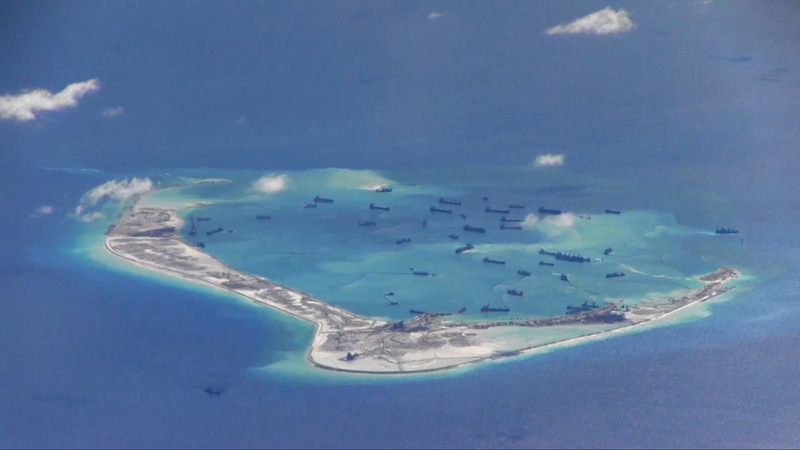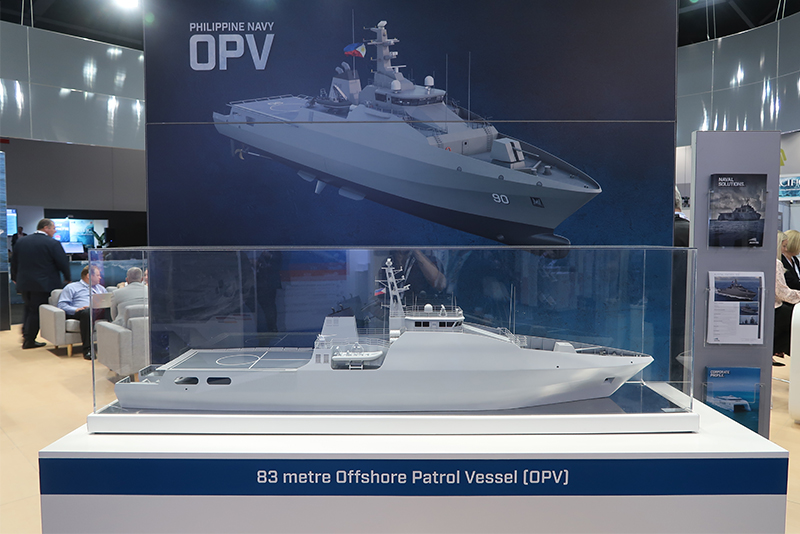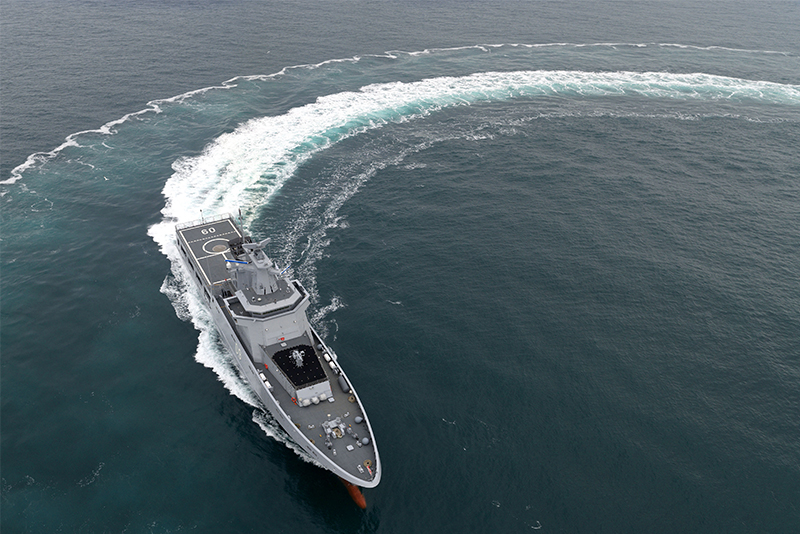
China’s maritime expansion has triggered a surge in interest for offshore patrol vessels to help police EEZs.
OPVs programmes
There are numerous offshore patrol vessels (OPVs) and patrol ships programmes activated by countries across the Indo-Pacific that are delivering new platforms that are set to improve maritime security across the region. However, these ships are being procured for very different reasons and they are operated by a myriad of different services from navies to coastguards or police forces, depending on local structures and departmental responsibilities.
OPVs are capable of providing maritime sovereignty and law enforcement in offshore areas and as such they can counter a range of trans-border challenges such as illegal fishing, smuggling, piracy, armed robbery and trafficing among other activities, making them a useful constabulary vessel.
Governments since the 1990s have recognised the importance of maritime territory and the economic value it has. Since then, OPVs have become a procurement priority for Asian maritime nations alongside more traditional war-fighting ships such as corvettes and frigates.
But Dr Collin Koh Swee Lean, Research Fellow at the S. Rajaratnam School of International Studies told AMR that depending on the government, there are varying levels of importance granted to maritime law enforcement agencies (MLEAs) and this differs between sub-regions. ‘We see more resources invested into MLEAs in Northeast Asia and to a lesser extent India in South Asia. But we still don’t witness a more radical shift in funding priorities towards MLEAs in SE Asia,” he said.
Apart from the obvious law enforcement reasons for buying OPVs, there are other procurement drivers for these ships. Often countries simply want to replace older vessels, but some governments are keen to develop a naval shipbuilding industry and building OPVs is the easiest and least complex platform it can start with. By selecting a foreign design and partnering with an overseas shipbuilder, some governments are investing in the skills and facilities needed to build these ships that should provide a more permanent local construction capability.
Thailand, Malaysia, Indonesia, Vietnam and the Philippines are all examples of countries that are building OPVs of various types and using transfers of technology with outside help to build up a naval shipbuilding base. In the future these countries will not only be able to build ships for their own navies or coastguards but also export them at a competitive price.
Territorial grab push-back
Chinese Coast Guard
Some countries that have specific security concerns that are pushing forwards the acquisition of OPVs. The creation of the Chinese Coast Guard (CCG) in 2013 and the deployment of its vessels into disputed waters to bolster Beijing’s claims has caused a series of crises in North East Asia and the South China Sea (SCS).
The programme of island building largely by dredging and reefs to create a small land mass, has resulted in China establishing a set of bases that can be used overtly to support its fishing fleets and CCG vessels further into the SCS.

Japan Coast Guard
In North East Asia, Japan is seeking a fleet of large OPVs to improve deterrence beyond the 12nm Territorial Sea, particularly over the disputed Senkaku/Diaoyu islands. The Japan Coast Guard (JCG) is responding to continuous incursions by the CCG around Japan’s Contiguous Zone and Territorial Sea. The JCG is expected to get three new patrol ships and the Japan Maritime Self Defence Force (JMSDF) is to start a programme for 12 vessels.
“This will free up the destroyers for other duties, especially peacetime prep for high-intensity ops. At present, the JMSDF is deploying its destroyers in support of the JCG presence in Extended Continental Shelf, revolving around the isles, to deter the PLA and also conduct ISR missions,” Collin said.
Taiwan
For Taiwan the issue is more about replacing older assets in the Coast Guard Administration and procurement is underway for at least three OPV programmes. Collin explained that its priorities include the Senkaku/Diaoyu islands too, but also the SCS “by building up Taiwan’s presence around Itu Aba” and the outlying islands off Fujian coast, such as Penghu and Matsu “where CGA routinely confronts Chinese illegal fishermen and sand dredgers.”
South China Sea
In the SCS, China has claimed these waters as its own under its nine-dash line policy but this overlaps with the maritime boundaries and Economic Exclusive Zones (EEZ) of other countries there. Since 2013 the CCG has been sending ships to the area and building permanent islands in the Spratly Islands and Paracel Islands that are close to the Philippines and Vietnam respectively. There are also disputes over Scarborough Shoal, which is also near the Philippines and even the Natuna Islands at the southern end of the South China Sea in between Malaysia and Indonesia.

Vietnam
For Vietnam, the Hai Yang Shi You 981 (HYSY981) incident in 2014 was one of the most serious disputes between the two countries for almost 30 years. HYSY981 is a Chinese oil rig that was moved into waters near the Paracel Island violating international agreement. Vietnam sent ships to prevent the platform from taking up a permanent position and conducting operations there and these vessels eventually clashed with the escorting Chinese ships resulting in collisions and injuries to sailors. An international outcry and anti-Chinese sentiments caused China to eventually withdraw the ship.
As China flexes its muscles, Collin said Vietnam is ‘well aware’ of its shortfalls in OPVs and is building ships for the Vietnam Coast Guard (VCG) and is also looking at buying larger ships. “Without offshore-capable assets such as OPVs to remain on station for long durations out to the EEZ limit, it’s impossible for Vietnam to sustain in any protracted standoff with the Chinese in SCS,” he said.
Another confrontation took place as recently as mid-2019 at Vanguard Bank – a set of reefs that make up the Western most part of the Spratly Islands within the 200nm limit of the Vietnamese EEZ. The Chinese survey ship Haiyang Dizhi 8 (HD8) escorted by as many as 20 ships entered waters in the vicinity of the reefs where Vietnam hosts its key DK1 oil rigs resulting in a stand-off between them and the VCG. Vietnam is likely to take China to international arbitration, something that the Philippines did successfully in 2016.
Philippines
A dispute between the Philippines and China over maritime claims came to a head in July that year when a tribunal at the Permanent Court of Arbitration in The Hague, ruled in favour of Manila. This was largely ignored by China and despite friendly relations between the new President of the Philippines Rodrigo Duterte and Beijing, there is support for a build-up of the Philippines Coast Guard (PCG).
Although there is little chance of the PCG matching the Chinese capacity Collin said that if even it does achieve its aims with new vessels from France and possible local construction of an Austal design “at best, the PCG may hope for a bigger OPV capacity that can better allow it to project presence and assert its own claims in SCS.” He added that the PCG still “wants to tap on this support to build its long-neglected capabilities. And it doesn’t want the Philippine Navy to upstage it.” This highlights an inter-service rivalry element in the region that is the same as that experienced between many other MLEAs.

Indonesia
In December 2019 a diplomatic incident with Indonesia was sparked after 60 Chinese fishing vessels entered the Natuna Sea near islands within its EEZ. The Indonesian Navy deployed patrol ships to the area and lodged a complaint with China whilst also sending ships to its maritime boundary with Vietnam, which has also conducted incursions of fishing boats into Indonesian waters.
However, Collin said the new OPVs for the Indonesian Coast Guard (BAKAMLA) are large enough in size to match those deployed by Vietnam and China but the build-up ‘is painstakingly slow’. He added: “While each new OPV is good in itself there’s just not enough built within a short time. Funding is still a concern. Whether Jakarta’s recent talk following the standoff with China over Natuna about acquiring offshore-capable assets for the TNI-AL and BAKAMLA will come to fruition remains a question mark.”
Malaysia
Earlier in December prior to the Natuna Sea incident Malaysia applied to the UN Division for Ocean Affairs and Law of the Sea to extend its continental shelf claims. This signals a partial fight back by the SE Asian states in the SCS against Chinese incursions and although Malaysia can do little physically to prevent China from entering its seas due as it has so few ships, a concerted legal effort to uphold the UN Convention of the Law of the Sea (UNCLOS) will bolster resistance, especially if Vietnam follows suit.
Possessing too few ships has been a persistent problem for the SCS states when facing the coercive tactics of China. Malaysia has just four OPVs in the Malaysian Maritime Enforcement Agency (MMEA), which is not sufficient. The CCG maintains a permanent presence around the Luconia Shoals reef north of Sarawak, which it considers part of the Spratly Islands. Whilst the Royal Malaysian Navy (RMN) conducts patrols with its corvettes it could use more support and the MMEA is expected to get another three OPVs should its programmes deliver the ships this year. Whether they will make any difference remains to be seen, but more ships means more regular patrols can be carried out increasing its presence.
Malaysia also has other security concerns following a succession of incursions into the province of Sabah in Borneo by insurgent forces from the Philippines. The most serious incident was the Lahad Datu incident in 2013 when over 200 armed militants in the district there by boat to claim the territory. That such a large group was able to land and occupy the town of Tanduo for some weeks and that the situation was only resolved after heavy engagement by the Malaysian Armed Forces and several shootouts, showed how porous the maritime border was and how unprepared security forces were. Malaysia has since established the Eastern Sabah Security Command (ESSCOM) but there is still regular activity by Moro pirates and the terrorist group Abu Sayyaf in the area that include incidents of kidnapping.
Thailand
The only SE Asian country not in dispute with China is Thailand, which does not see China as a threat. The Royal Thai Navy is buying new submarines and an amphibious ship from China and has purchased frigates and OPVs from Beijing in the past. But like the other SE Asian nations, Thailand is building its new OPVs locally to Western designs with technology transfer and development of construction facilities to enhance its industrial capacity.
India
Elsewhere, India has been expanding its OPV fleet following the terror attacks in Mumbai in 2008 that will serve both the coastguard and the navy. The ships will also improve maritime security in India’s large EEZ. Pakistan is following suit to match India but also has many older ships that need replacing. Sri Lanka is getting new OPVs from China and India also to bolster maritime security in its large EEZ and harness the resources of its maritime territory. Collin said this has been a long time coming ‘because of the earlier focus on defeating the LTTE insurgency, which placed greater emphasis on acquiring coastal and inshore fast interdiction craft to support army operations and tackle the Sea Tigers (the LTTE naval wing).’
Australia
In Oceania, the Royal Australian Navy is embarking on a large OPV programme to replacing older ships but also to increase capacity. Australia not only need to conduct routine maritime security and border management duties (such as Operation Sovereign Borders to counter refugee boats) but also conduct theatre security engagements with its neighbours.

Collin said that “a good bulk of offshore protection duties, for the energy sector, is performed by the RAN’s frigates. Using frigates to do such constabulary duties isn’t economical at all and diverts such precious assets away from other mission requirements.” He added that as the Adelaide-class frigates are leaving service it puts pressure on the RAN, which also facing crewing difficulties so ‘husbanding scarce manpower can be accomplished by deploying OPVs with leaner crews compared to frigates for peacetime constabulary duties.’ This makes the introduction of a dozen OPVs a useful long-term solution to the challenges of maritime security.
The expansion of Chinese influence in NE Asia and the SCS using non-combatant platforms for presence and coercion is the primary driver for the focus on OPVs across the Indo-Pacific. Despite the rulings of the international court this situation is likely to continue for some time and the pressures on maritime security are only going to increase. Wealthier countries like India, Japan and Australia that also have a naval shipbuilding base are able to order, build and introduce new OPVs into service. However, the lack of funds and facilities means that for most states in the SCS the number of active OPVs remains woeful and despite current programmes their capabilities will remain limited.
by Tim Fish












